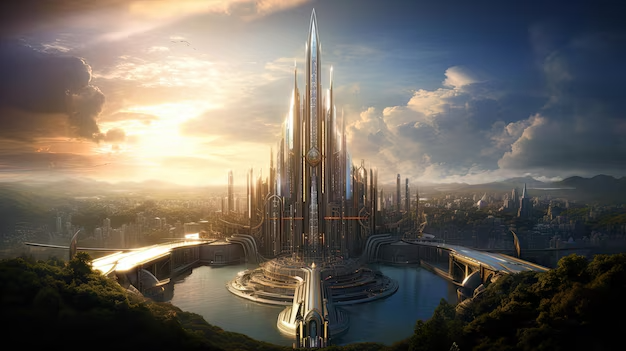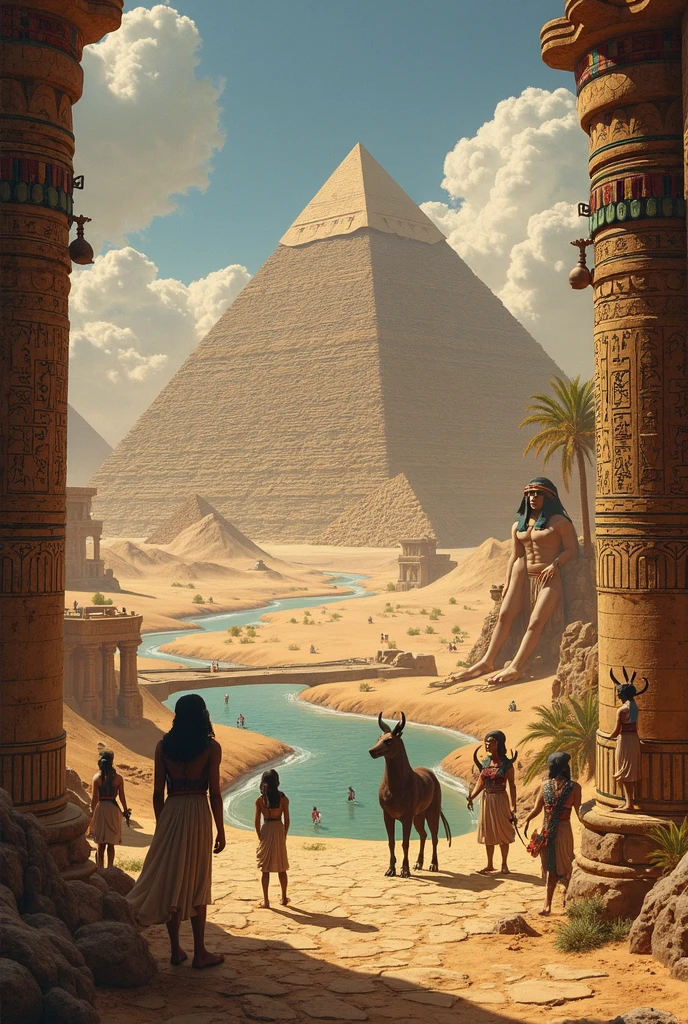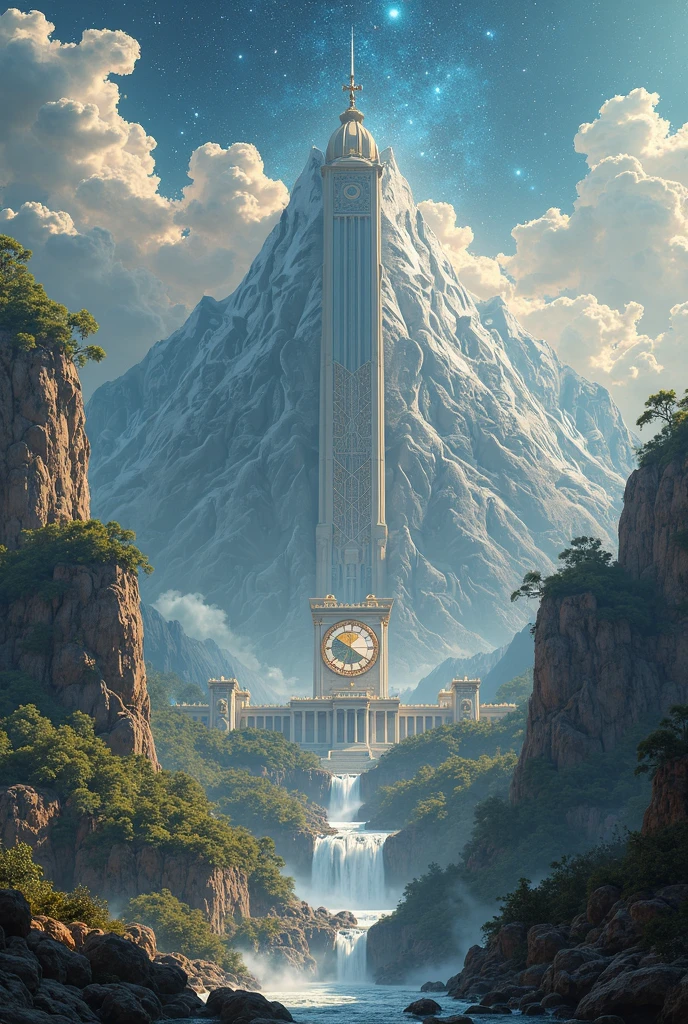Irish Mythology: The Mystical World of Gods and Heroes
Irish mythology is a rich tapestry of legends, gods, and epic battles that have shaped the cultural identity of Ireland. Among its most fascinating elements are the Fomorian race, the mighty Dagda, the enigmatic Morrigan, and the heroic Cú Chulainn. These stories are often grouped into the Cycles, which categorize the myths into distinct eras. The Tuatha Dé Danann, a divine race, play a central role in these tales, clashing with the monstrous Fomorians in legendary conflicts.
The Fomorians: Ancient Enemies of the Tuatha Dé Danann
The Fomorian were a race of supernatural beings often depicted as hostile and monstrous. They represented chaos and were the adversaries of the Tuatha Dé Danann. According to myth, the Fomorians ruled Ireland before the arrival of the Tuatha Dé, and their battles symbolize the struggle between order and chaos.
Key Fomorian Figures
- Balor of the Evil Eye – A fearsome Fomorian king whose gaze could bring death.
- Bres – A half-Fomorian ruler who betrayed the Tuatha Dé Danann.
- Elatha – A more noble Fomorian associated with beauty and wisdom.
| Fomorian Figure | Role in Mythology |
|---|---|
| Balor | Leader of the Fomorians, slain by Lugh |
| Bres | Tyrannical king who oppressed the Tuatha Dé |
| Elatha | Father of Bres, known for his fairness |
The Tuatha Dé Danann: Ireland’s Divine Race
The Tuatha Dé Danann were a god-like race who brought advanced skills and magic to Ireland. They defeated the Fomorian in the Second Battle of Mag Tuired, securing their dominance. Among their most revered figures were the Dagda, the all-powerful father god, and the Morrigan, the goddess of war and fate.
Major Tuatha Dé Danann Deities
- Dagda – The “Good God,” master of life and death.
- Morrigan – A shapeshifting goddess linked to prophecy and battle.
- Lugh – The multi-skilled hero who defeated Balor.
The Cycles of Irish Mythology
Irish myths are traditionally divided into four Cycles, each representing a different era and set of stories. These include:
- Mythological Cycle – Deals with the origins of Ireland and the Tuatha Dé Danann.
- Ulster Cycle – Focuses on heroes like Cú Chulainn and the Red Branch Knights.
- Fenian Cycle – Centers on the warrior band Fianna and their leader, Fionn mac Cumhaill.
- Historical Cycle – Blends myth with pseudo-history, including the legendary High Kings.
Cú Chulainn: The Hero of the Ulster Cycle
One of the most celebrated figures in Irish mythology is Cú Chulainn, the warrior of Ulster. Known for his superhuman strength and tragic fate, his stories are filled with heroism and tragedy. His most famous battle, the Táin Bó Cúailnge (Cattle Raid of Cooley), showcases his unmatched combat skills.
| Hero | Key Traits | Major Story |
|---|---|---|
| Cú Chulainn | Superhuman rage (ríastrad), loyalty to Ulster | Táin Bó Cúailnge |
| Fionn mac Cumhaill | Wisdom, leadership of the Fianna | Pursuit of Diarmuid and Gráinne |
The Morrigan: Goddess of War and Fate
The Morrigan is one of the most complex figures in Irish mythology. Often appearing as a crow, she is associated with battle, prophecy, and sovereignty. She plays a crucial role in the fate of Cú Chulainn, foretelling his death and witnessing his final moments.
Forms of the Morrigan
- Badb – The “Battle Crow,” inciting fear in warriors.
- Macha – Linked to sovereignty and horses.
- Nemain – The frenzied aspect of war.
For further reading on Irish mythology, check out these resources: Ancient.eu, IrishCentral, Britannica.
Explore more fascinating articles on mythology and folklore, and don’t forget to follow us on Facebook for daily updates!
The Fenian Cycle: Legends of Fionn mac Cumhaill
While the Ulster Cycle focuses on Cú Chulainn, the Fenian Cycle revolves around the legendary warrior band known as the Fianna and their leader, Fionn mac Cumhaill. Unlike the aristocratic heroes of Ulster, the Fianna were roving mercenaries who lived off the land, embodying ideals of bravery, wisdom, and loyalty. Fionn’s adventures, from gaining supernatural knowledge to tragic love stories, make this cycle uniquely compelling.
Key Stories from the Fenian Cycle
- The Salmon of Knowledge – Fionn gains wisdom by accidentally tasting a magical salmon.
- The Pursuit of Diarmuid and Gráinne – A tragic love triangle involving Fionn, his warrior Diarmuid, and the betrothed Gráinne.
- The Battle of Gabhra – The downfall of the Fianna due to political betrayal.
| Fenian Character | Role | Significance |
|---|---|---|
| Fionn mac Cumhaill | Leader of the Fianna | Symbol of wisdom and leadership |
| Diarmuid Ua Duibhne | Fianna warrior | Tragic hero of love and betrayal |
| Oisín | Fionn’s poet son | Bridge between mortal and Otherworldly realms |
The Otherworld: A Realm Beyond Mortal Reach
Irish mythology frequently references the Otherworld, a mystical dimension inhabited by gods, spirits, and the dead. Unlike the Christian afterlife, the Otherworld is a place of eternal youth, feasting, and magic. Entrances to this realm were believed to exist in ancient mounds (sídhe) or across the western sea.
Notable Otherworld Locations
- Tír na nÓg – The “Land of Youth,” where Oisín lived for centuries.
- Mag Mell – The “Plain of Honey,” a paradise ruled by Manannán mac Lir.
- Tech Duinn – The “House of Donn,” a gathering place for souls before the afterlife.
Manannán mac Lir: God of the Sea and Otherworld
One of the most enigmatic figures in Irish mythology is Manannán mac Lir, the god of the sea and guardian of the Otherworld. Often depicted with a cloak of invisibility and a boat that sails without oars, he is both a protector and a trickster. His influence extends to the Isle of Man, which bears his name.
Manannán’s Symbols and Artifacts
- Cloak of Invisibility – Used to conceal or reveal the Otherworld.
- Wave-Sweeper – His self-navigating boat.
- Cauldron of Plenty – A symbol of abundance and rebirth.
The Historical Cycle: Blending Myth and Kingship
The Historical Cycle, also called the Cycle of the Kings, merges mythology with pseudo-historical accounts of Ireland’s ancient rulers. These tales often emphasize the divine right of kings, with figures like Conn of the Hundred Battles and Niall of the Nine Hostages blurring the line between legend and reality.
Legendary High Kings of Ireland
| King | Claim to Fame | Mythological Connection |
|---|---|---|
| Conn Cétchathach | Unifier of Ireland | Encountered the sovereignty goddess Ériu |
| Cormac mac Airt | Wise and just ruler | Associated with the magical cup of truth |
| Niall Noígíallach | Founder of the Uí Néill dynasty | Chosen by a hag representing sovereignty |
Banshees and Other Supernatural Beings
Beyond gods and heroes, Irish mythology is rich with lesser-known entities like the banshee (bean sídhe), a female spirit whose wail foretells death. Other creatures include:
- Púca – A shapeshifting trickster, often appearing as a black horse.
- Leprechaun – A solitary fairy known for hoarding gold.
- Dullahan – A headless horseman, an omen of mortality.
Sacred Sites and Their Mythological Ties
Many of Ireland’s ancient landmarks are steeped in myth. The Hill of Tara, for example, was the seat of the High Kings and linked to the Tuatha Dé Danann. Similarly, Newgrange, a prehistoric passage tomb, is said to be the burial site of the Dagda’s son, Aengus.
Mythological Landmarks
- Hill of Tara – Coronation site of kings, tied to the goddess Medb.
- Newgrange – Associated with the winter solstice and Aengus’ love story.
- Rock of Cashel – Linked to St. Patrick but rooted in earlier pagan lore.
The Influence of Christianity on Irish Myths
With the arrival of Christianity in the 5th century, many pagan myths were adapted or recorded by monks. Figures like Brigid evolved from a goddess into a saint, while other tales were reframed as allegories. The Lebor Gabála Érenn (Book of Invasions), compiled by Christian scholars, preserved pagan lore while fitting it into a biblical framework.
Pagan-to-Christian Transitions
| Pagan Figure | Christian Adaptation |
|---|---|
| Brigid (goddess) | St. Brigid of Kildare |
| Dagda | Sometimes equated with biblical figures like Noah |
| Otherworld | Reinterpreted as Heaven or Fairyland |
For deeper insights into these topics, explore these resources: UCD’s Irish Mythology Guide, The Irish Story, Mythical Ireland.
Explore more fascinating articles on mythology and folklore, and don’t forget to follow us on Facebook for daily updates!
The Role of Druids in Irish Mythology
Druids held immense power in ancient Irish society, serving as priests, judges, and advisors to kings. In mythology, they were often depicted as possessing divine knowledge and the ability to perform powerful magic. Figures like Cathbad, the druid of the Ulster Cycle, played pivotal roles in shaping the destinies of heroes like Cú Chulainn.
Powers and Responsibilities of Druids
- Divination – Predicting outcomes through omens and rituals.
- Shape-shifting – Transforming into animals or other forms.
- Healing – Using herbs and incantations to cure ailments.
| Druid | Mythological Role | Notable Feat |
|---|---|---|
| Cathbad | Ulster’s chief druid | Foretold Cú Chulainn’s greatness and doom |
| Mog Ruith | Blind druid of Munster | Commanded the sun and storms |
| Birog | Druidess | Helped rescue Lugh from Balor |
The Legend of the Children of Lir
One of Ireland’s most poignant tales is the story of the Children of Lir, cursed by their stepmother to spend 900 years as swans. This myth, part of the Mythological Cycle, explores themes of love, betrayal, and endurance. The swans’ eventual return to human form—only to crumble into dust—highlights the fleeting nature of life.
Key Moments in the Tale
- The Curse – Aoife, jealous of Lir’s children, transforms them into swans.
- Exile – The swans wander Ireland’s lakes for centuries.
- Release – The curse breaks with the arrival of Christianity, but time catches up to them.
The Concept of Geis: Sacred Taboos
A geis (plural: geasa) was a sacred prohibition or obligation placed on heroes, often dictating their fate. Violating a geis could lead to downfall, as seen with Cú Chulainn, who was forbidden to eat dog meat but broke the taboo, weakening him before his final battle.
Famous Geasa in Mythology
| Hero | Geis | Consequence of Breaking |
|---|---|---|
| Cú Chulainn | Never refuse hospitality | Forced to fight against his allies |
| Diarmuid Ua Duibhne | Never hunt a boar | Killed by his foster-brother in boar form |
| Conaire Mór | Never let birds enter Tara | Triggers his doom during a siege |
The Festival of Samhain: Origins and Myths
The ancient festival of Samhain (modern Halloween) marked the end of the harvest and the thinning of the veil between worlds. Myths describe it as a time when the Otherworld opened, allowing spirits and the Aos Sí (fairies) to walk among mortals. The Morrigan was particularly active during Samhain, foretelling battles and deaths.
Samhain Traditions in Myth
- Bonfires – Lit to ward off malevolent spirits.
- Feasting – Offerings to the gods and ancestors.
- Divination – Rituals to predict future events.
The Aos Sí: Ireland’s Fairy Folk
The Aos Sí (People of the Mounds) were supernatural beings inhabiting Ireland’s landscapes. Unlike the Tuatha Dé Danann, they were later folkloric interpretations of the gods, often feared as capricious or vengeful. Many Irish myths warn against offending them, as they could bring blessings or curses.
Types of Aos Sí
- Bean Sídhe (Banshee) – Wails to warn of death.
- Leanan Sídhe – A muse-like fairy who inspires artists at a cost.
- Fear Gorta – A spectral beggar testing human kindness.
The Myth of the Selkie: Shapeshifters of the Sea
Though more prominent in Scottish lore, selkies (seal-people) appear in Irish coastal tales. These beings could shed their skins to walk on land, often trapped in marriages if humans stole their pelts. The myth reflects themes of freedom and loss.
Famous Selkie Stories
- The Selkie Wife – A fisherman hides a selkie’s skin, forcing her into marriage until she reclaims it.
- The Selkie’s Lament – A selkie man returns to the sea, leaving his human family behind.
For further exploration, visit these authoritative sources: Order of Bards, Ovates & Druids, Library Ireland, CELT: Corpus of Electronic Texts.
Explore more fascinating articles on mythology and folklore, and don’t forget to follow us on Facebook for daily updates!
The Legend of Tír na nÓg: The Land of Eternal Youth
One of the most enchanting tales in Irish mythology is the story of Tír na nÓg, the Otherworldly paradise where time stands still. The legend follows Oisín, son of Fionn mac Cumhaill, who falls in love with Niamh of the Golden Hair, a princess from this mystical realm. Their story embodies the bittersweet human longing for immortality and the consequences of returning to the mortal world.
The Tragic Journey of Oisín
- The Invitation – Niamh invites Oisín to Tír na nÓg on her magical white horse.
- Three Hundred Years – Oisín lives joyously in the Land of Youth, unaware of time’s passage.
- The Return – Upon visiting Ireland, Oisín accidentally steps on mortal soil, instantly aging 300 years.
| Element | Symbolism |
|---|---|
| White Horse | Vehicle between worlds |
| Golden Apple | Otherworldly sustenance |
| Aging Upon Return | Irreversibility of time |
The Sacred Trees of Ireland: Celtic Tree Lore
Ancient Irish culture revered trees as sacred beings, with each species holding specific magical properties. The Ogham alphabet, used by Druids, was based on tree names and their symbolic meanings. Certain trees like the oak, ash, and yew were considered particularly powerful.
Significant Trees in Irish Mythology
- Bile Tortan – The sacred ash tree that protected Tara.
- Eó Mugna – A legendary oak that produced acorns, apples, and nuts simultaneously.
- Crann Bethadh – The Celtic Tree of Life, representing interconnection.
The Warrior’s Code: Celtic Combat Traditions
Irish heroes followed strict codes of conduct in battle, blending honor with supernatural elements. The fíanna (warrior bands) had initiation rites, while individual champions like Cú Chulainn displayed unique battle frenzies.
Celtic Combat Practices
| Practice | Description | Example |
|---|---|---|
| Ríastrad | Battle frenzy/distortion | Cú Chulainn’s warp spasm |
| Single Combat | Champion vs champion | Fer Diad’s duel with Cú Chulainn |
| Geasa in Battle | Combat restrictions | Diarmuid’s boar geis |
The Myth of the Salmon Leap
The Salmon of Knowledge myth features prominently in the Fenian Cycle, where the young Fionn gains wisdom by burning his thumb on the cooking salmon. This story connects to several Irish landmarks, particularly Leixlip (from the Norse “salmon leap”), where the River Liffey’s waterfalls mimic the salmon’s legendary jump.
Symbolic Elements
- Hazel Nuts – Source of the salmon’s wisdom
- Thumb Knowledge – Fionn’s method of accessing wisdom
- River Boyne – Alternative location for the myth
The Concept of Sovereignty Goddesses
Irish mythology features powerful female figures who personify the land itself and grant kingship rights. The Sovereignty Goddess often appears as a hag who transforms into a beautiful maiden when properly recognized by a worthy king.
Notable Sovereignty Figures
| Goddess | Associated Kingdom | Ritual |
|---|---|---|
| Ériu | Ireland (Éire) | Naming ceremony |
| Medb | Connacht | Marriage to successive kings |
| The Hag of Beara | Munster | Stone monument |
For deeper exploration of these topics, consult these resources: Druid Tree Lore, Irish Forestry, UCD Iron Age Studies.
Explore more fascinating articles on mythology and folklore, and don’t forget to follow us on Facebook for daily updates!


